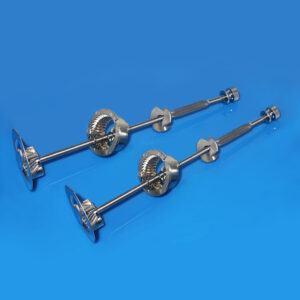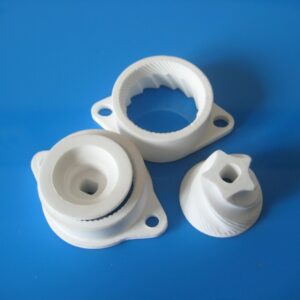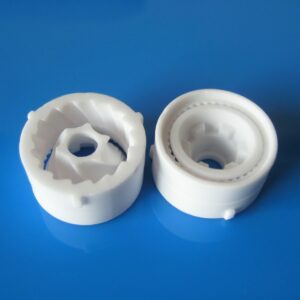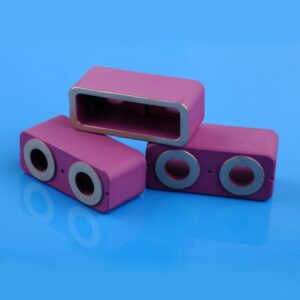There are many types of coffee makers with built-in coffee grinders, with options ranging from conical burr to flat burr. We can't simply say who is good and who is bad when it comes to conical or flat grinding. Most professional coffee drinkers feel that flat burrs give a more consistent grind, which results in a cleaner cup. conical burrs, on the other hand, yield more fines and produce a cup with more body feel.
| Two common types of coffee grinders |
| Conical burr |
Flat burr |
| More of a V shape, with the center burr fitting into the outer burr, both of them also lined with sharp-edged grooves that cut up the beans as they press together. |
Consist of two flat, ring-shaped burrs lined with grooves that break up the beans as the burrs press together. |
About the raw material
The product you're looking at is made of 95% alumina, an advanced ceramic that will never rust, providing long-lasting performance.
| Mechanical property |
Ceramic material |
99.5%
Al2O3 |
99%
Al2O3 |
95%
Al2O3 |
MgO.SiO2
(Steatite) |
| Density (g/cm3) |
≥3.90 |
≥3.85 |
≥3.65 |
≥2.70 |
| Water absorption (%) |
0 |
0 |
0 |
0 |
| Hardness (HV) |
1700 |
1700 |
1500 |
800 |
| Flexural strength (Mpa) |
≥379 |
≥338 |
≥320 |
≥190 |
| Compressive strength ( Mpa) |
≥2240 |
≥2240 |
≥2000 |
≥551 |
| Fracture toughness (Mpam1/2) |
4-5 |
4-5 |
3-4 |
- |
Why choose us?
Specializing in the production of ceramic grinding burrs, Jinghui Industry Ltd has 10+ years of research and development production experience. Let us identify the best ceramic material for your grinder application.
| Four things you want to know about coffee grinders |
| 1. Electric vs. Manual |
Electric grinder |
Manual grinder |
| PROS |
Grinds large quantities of coffee fast
Durable materials and parts
Extensive grind settings |
Affordable
Portable
Quiet
Multiple grind sizes |
| CONS |
Loud
Requires electricity
Low-quality grinders wear down easily
Performance is based on price |
You have to work for it.
Less efficient |
| 2. Blade vs. Burr |
Blade Grinder |
Burr Grinder |
| PROS |
Affordable
Simple use
Small size |
Consistent grind size
Numerous grind settings
Little to no heat
Quality burr materials |
| CONS |
Inconsistent grind size
Heat
Low-quality materials and parts |
Can be expensive |
| 3. Flat vs. Conical burr |
Flat Burr |
Conical Burr |
| PROS |
Remarkably even particle size
Best for commercial use |
Cheaper
Quieter
Consistent grind
Good for home use and espresso |
| CONS |
More expensive |
Less efficient |
| 4. Ceramic vs. Steel Burr |
Ceramic Burr |
Steel Burr |
| PROS |
Burrs stay sharp longer
Best for espresso roasts
Longer lifespan (less warping, blunting)
Full-body taste and mouthfeel |
Burrs start sharper
Good for single-source, non-espresso beans
Less initial cost
Clean taste and mouthfeel |
| CONS |
More initial cost
Break more easily |
More recurring cost
Not great for warmer environments |






